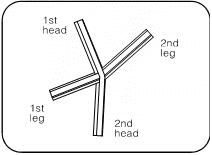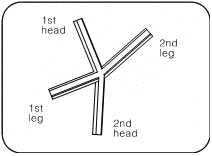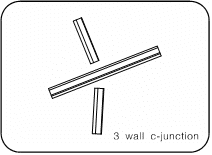Creating Junctions between Walls
Home > 05 Walls > Creating Junctions between Walls
Creating Junctions between Walls
Create intersections and junctions between walls.
\wjun
You can choose from the following options to create the type of junction you need:
Joining two walls by a T-junction (\tjun)
Creating an X-junction between intersecting walls (\xjun)
Creating a complex junction between three or four walls (\cjun)
Each of these options are described in detail below.
Joining Two Walls by a T-Junction
Create a T-junction between two walls.
\tjun
Indicate the wall that forms the leg of the T. The point you indicate should be at the end of the wall closest to the junction.
Indicate the wall that forms the head of the T. If the leg of the T crosses the head, it is truncated to the head. You must indicate the leg at a point on the side
to be kept.
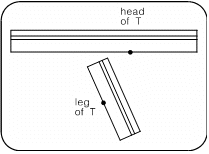
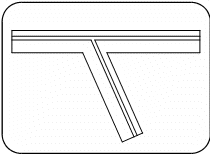
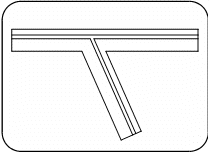
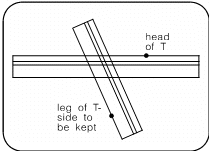
The system joins the two walls and their layers using the current default solution from the T-junction library of solutions. The solution is the manner in which the walls join, i.e., which layer of the leg penetrates to which layer of the head and whether they are merged or not.
The system asks you whether the solution is acceptable. If you reject the solution, the system provides consecutive solutions from the library until you reply affirmatively. The accepted solution then becomes the default for further T-junctions.
If the existing solutions are unsatisfactory, you can define your own. See the Defining a new T-junction solution between walls (\tdef) command.
Creating an X-Junction between Intersecting Walls
Create an X-junction between two intersecting walls.
\xjun
In an X-junction the system cuts one wall and joins it to the continuous wall. In effect it breaks one wall into two and creates two T-junctions on either side of the head. The current default T-junction is used by the system.
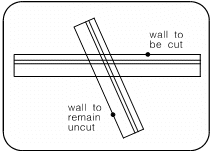
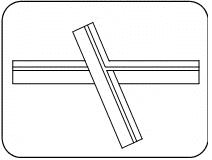
Indicate the wall to be cut (leg).
Indicate the wall to remain uncut (head).
Creating a Complex Junction between 3 or 4 Walls
Create a junction between 3 or 4 walls whose extensions meet at a point.
\cjun
In a C-junction the system makes one wall continuous and joins one or two other walls to it using the current T-junction default solution for both sides of the heads.
The first two walls (which must be of the same type, symmetry and alignment) form a corner between themselves and are regarded as heads of the T while the third (and fourth wall if applicable) perform like the leg of the T.
State whether three or four walls are involved in the junction.
Indicate the first and second head of the junction.
Three Walls
Indicate and confirm the leg of the wall. The three walls are joined. Confirm that the solution is acceptable.
Where the leg extends through both sides of the head walls, indicate the side of the leg that you want to keep. The other side is deleted.
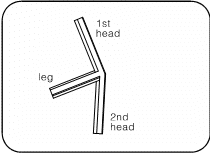
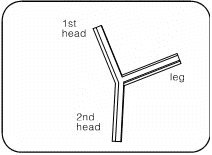
Four Walls
Indicate the first leg of the wall. Indicate the second leg of the junction. This must be on the opposite side of the first wall.
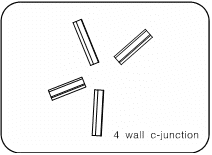
The system stretches or shortens the walls as necessary. Accept the solution or change the first or second leg of the wall.
If all the walls are of the same type, the first indicated wall penetrates the other walls.
After the junction is executed you may change the manner in which the layers of the first or second leg are joined.
